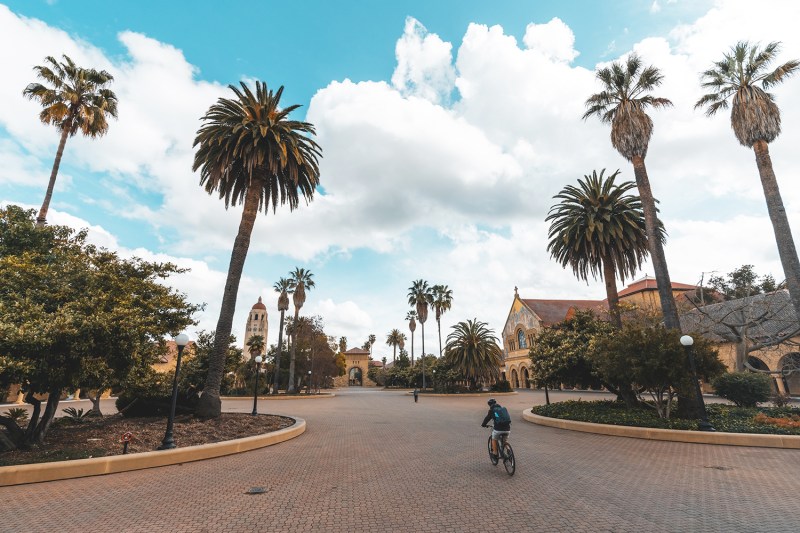While the majority of Stanford students will not live on campus during winter quarter, a number of undergraduates with special circumstances are staying in University housing. This winter, students and resident assistants (RAs) alike are facing the challenge of fending off loneliness while following COVID-19 regulations on campus.
On Jan. 9, two days before winter quarter began, Stanford announced that it had backtracked on its plan to bring frosh and sophomores to campus. Among the groups allowed to stay on campus are those with special circumstances: undergraduates with compelling academic or personal needs to be on campus, such as international students who might face travel complications or students from unsafe home environments.
For students with special circumstances, the ability to escape difficult living situations at home and prioritize their academic and personal lives is worth the isolation many say they’re experiencing on campus. Students on campus can only socialize within pods of eight students and do not attend in-person classes.
When the pandemic hit last winter, Dylan, an RA who was granted pseudonymity for fear of professional retaliation, traveled home to their rural community to live with their grandfather and a few other people.
Although Dylan now grapples with a wide range of obstacles on campus, staying home proved equally challenging. For instance, their grandfather, the person they miss the most while away from home, suffers from dementia.
“Adjusting to life in a pandemic meant constantly reminding him of what was going on in the world,” they said.
Their grandfather’s condition also prevented Dylan from fully engaging in online learning: “He thought I was still in high school and required a bedtime, so when I had to stay up late to do readings or write a paper, I had to type quietly, sitting under a lamp in the living room, or else he’d yell at me to go to bed,” Dylan said.
Even though living at Stanford without the usual hustle and bustle of students and professors feels strange, Dylan ultimately feels grateful to be on campus at all.
“Back home, I was constantly worried about my family’s health and their potential exposure to COVID,” Dylan said. “I needed to come to campus because that’s where I have access to better WiFi and I’m allowed to be a little selfish with my time and boundaries.”
Being on campus, however, presents its own unique set of difficulties. Manar Barsi ’22, an RA in Otero, came to campus to establish a community for frosh after her experience as a first-year mentor revealed that many students, including upperclassmen, felt detached from the University. But being able to support frosh is difficult with social distancing.
“I thought if I could help a frosh make one friend or feel a sense of home at Stanford, then that’s great,” she said. “It might be a little naive, but I really believe in the power of community. I think we shouldn’t give up on what Stanford can be.”
Students on campus, including Barsi, have figured out ways to safely gather with friends. Since her room is located on the first floor, her friends can visit her window from outside, where they talk to each other while wearing masks. Barsi also regularly goes on socially distant walks.
But not all students have abided by campus rules, and the urge to gather is strong. Dylan, the RA, said they had witnessed several gatherings on campus.
“There were a number of incidents where residents disregarded social distancing rules and lacked mask etiquette outside and inside of EVGR-A,” Dylan said. “Since we’re located next to graduate housing, a lot of grads would hang out in pairs or groups, which made it even harder to decipher between undergrads and grads.”
Several days after The Daily’s interview with the RA, two gatherings of 20 individuals or more occurred in violation of campus rules, The Daily reported. One took place near 664 Lomita Court, and the other took place on Wilbur Field.
The University “investigate[s] every matter that is reported, responding immediately as needed,” Student Affairs spokesperson Pat Harris told The Daily, but does not comment on the confidential review process for potential student conduct violations.
For RAs, attempting to both follow and implement safety protocols amid a pandemic remains a challenge, Dylan said.
“As students just trying to cope with social isolation and maintain safety protocols ourselves, advising residents to stay six feet apart or wear masks is hard because that can jeopardize our own safety,” they said, explaining that they feared breaking up gatherings would mean getting physically close to other students.
Despite the gatherings, Yang Fan Yun ’23, a student from New Zealand, expressed optimism about winter quarter, saying that the small group of students living on campus have greater incentives to follow COVID-19 precautions than does the average college student.
“The students who are allowed back really do want to be on campus and don’t want to get sent home because they’re international students or have special circumstances, so they’re really compliant with the rules,” Yun said.
Cristina Danita ’23, a student from Moldova, spent fall on campus and said that winter quarter, thus far, has offered an improved student living experience.
“Last quarter, there was no one outside, and not many friends that I knew were here,” Danita said. “This quarter is much better. It feels nicer to have people living all around the campus.”
Contact Alexandra Chang at abc2022 ‘at’ stanford.edu.
